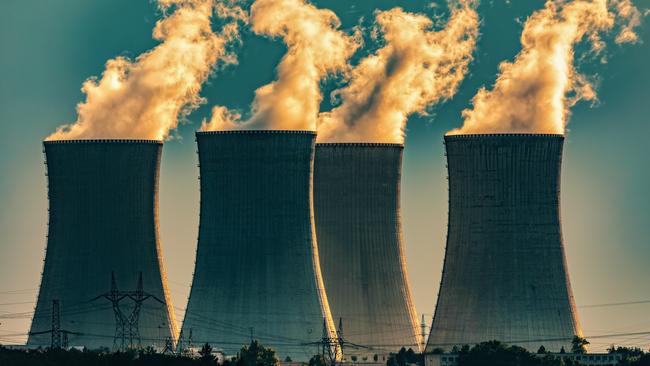‘Inconvenient truth for Albanese, Bowen’: Coalition seizes on US Energy Department nuclear report
The Coalition has jumped on a report finding electricity system costs would be 37pc cheaper when renewables and storage are combined with nuclear, but Chris Bowen says renewables are cheaper every time.

Chris Bowen has declared “renewables are cheaper than nuclear every time” after the Coalition seized on a US government report finding generation and transmission system costs would be 37 per cent cheaper when renewables and storage were combined with nuclear, compared to a renewables and storage-only approach.
As the Australian federal election edges closer – which both major parties have described as a referendum on nuclear – the US Energy Department released new analysis stating nuclear was “one of the few proven options” to deliver at least 700GW to 900GW of additional clean firm capacity for the country to reach net zero.
“Nuclear does not ‘displace’ or ‘compete with’ renewables; decarbonisation will require both new nuclear and renewable capacity. Including nuclear and other clean firm resources reduces the cost of decarbonisation by reducing the need for additional variable generation capacity, energy storage, and transmission,” the report, called Pathways to Commercial Liftoff:Advanced Nuclear, states.
There are 94 nuclear reactors at 54 sites in the US providing 20 per cent of American electricity generation and almost half of domestic carbon-free electricity.
The US report published modelling for two decarbonisation scenarios in California, which showed nuclear with variable renewables and storage reduced total system costs from $129-$150 per MWh (renewables and storage only) to $80-$94 per MWh (renewables and storage with nuclear).
Opposition climate change and energy spokesman Ted O’Brien said the report affirmed the Coalition’s case for nuclear and “rejects Labor’s all-eggs-in-one-basket renewables-only plan”.
“The US is backing the Coalition’s approach of integrating nuclear with renewables to bring power prices down and rejecting Labor’s failing renewables-only approach,” Mr O’Brien said.
“This is the inconvenient truth that Anthony Albanese and Chris Bowen don’t want Australians to hear. How has Labor gotten it so wrong? Bowen has been over-estimating the cost of nuclear while underestimating its benefits. He has repeatedly claimed that nuclear energy would derail the energy transition, but this report demonstrates the opposite.”
Mr Bowen, the Climate Change and Energy Minister, said Mr O’Brien should “stop making this up about US reports and start releasing his own costings”.
“The report does not say what Mr O’Brien pretends it does. If Mr O’Brien ever gets around to doing his day job and releasing honest costings, it will be clear that renewables are cheaper than nuclear every time,” Mr Bowen said.
Government sources said the report made clear what the Albanese government had been saying: that nuclear may play a role in decarbonising grids in countries that have an existing nuclear industry and don’t have Australia’s world-leading renewables resources.
They said claims that nuclear brings down total system costs was “misinformation” because the report’s findings were based on having 20 per cent of the US system already supplied by nuclear and therefore didn’t account for the “massive” establishment and capital costs that would occur in Australia.
The Coalition’s plan is for the first nuclear reactors to come online in Australia in the mid-2030s but the US report warns: “Waiting until the mid-2030s to deploy new nuclear at scale could lead to missing decarbonisation targets and/or significant nuclear supply chain overbuild.
“If deployment starts by 2030, ramping annual deployment to 13GW by 2041 would provide 200GW by 2050; a five-year delay could require 20+GW per year to achieve the same 200GW and could result in as much as a 50 per cent increase in the capital required.”
The US Energy Department says nuclear capacity has the potential to triple from 100GW this year to 300GW by 2050 and there was an increased need for and interest in the technology, largely driven by artificial intelligence and data centres that required zero emissions generation concentrated in a limited footprint.
“This provides a set of customers who are willing and able to support investment in new nuclear generation assets. Combined with the Inflation Reduction Act incentives, this demand has created a step change in the valuation of the existing fleet and new reactors,” the report states.
“In 2022, utilities were shutting down nuclear reactors; in 2024, they are extending reactor operations to 80 years, planning to uprate capacity, and restarting formerly closed reactors.”




To join the conversation, please log in. Don't have an account? Register
Join the conversation, you are commenting as Logout